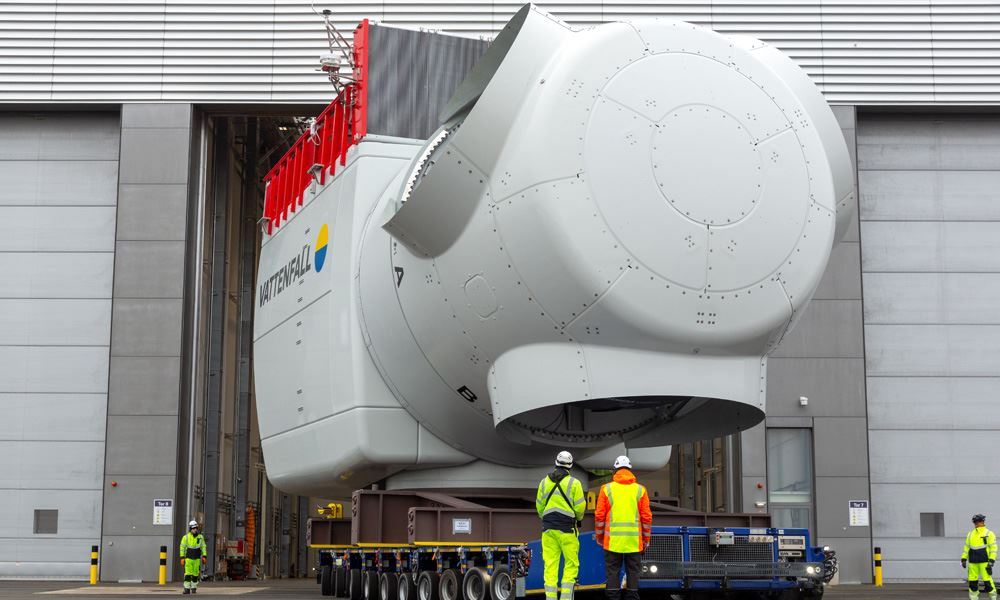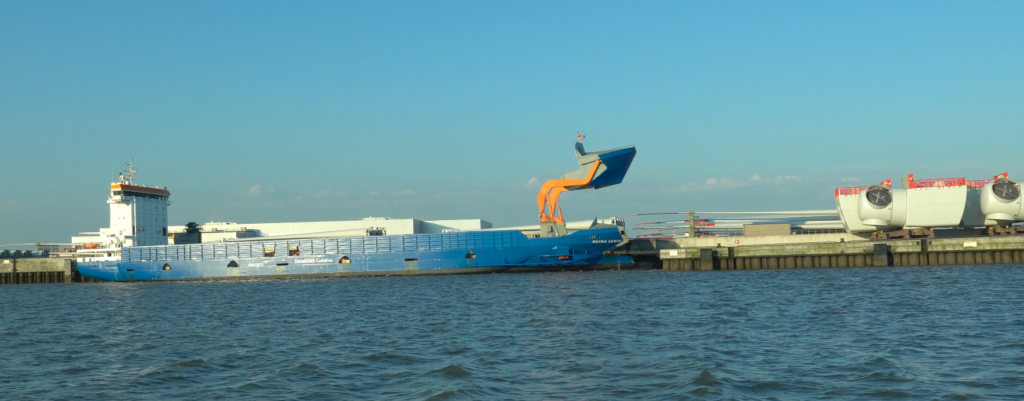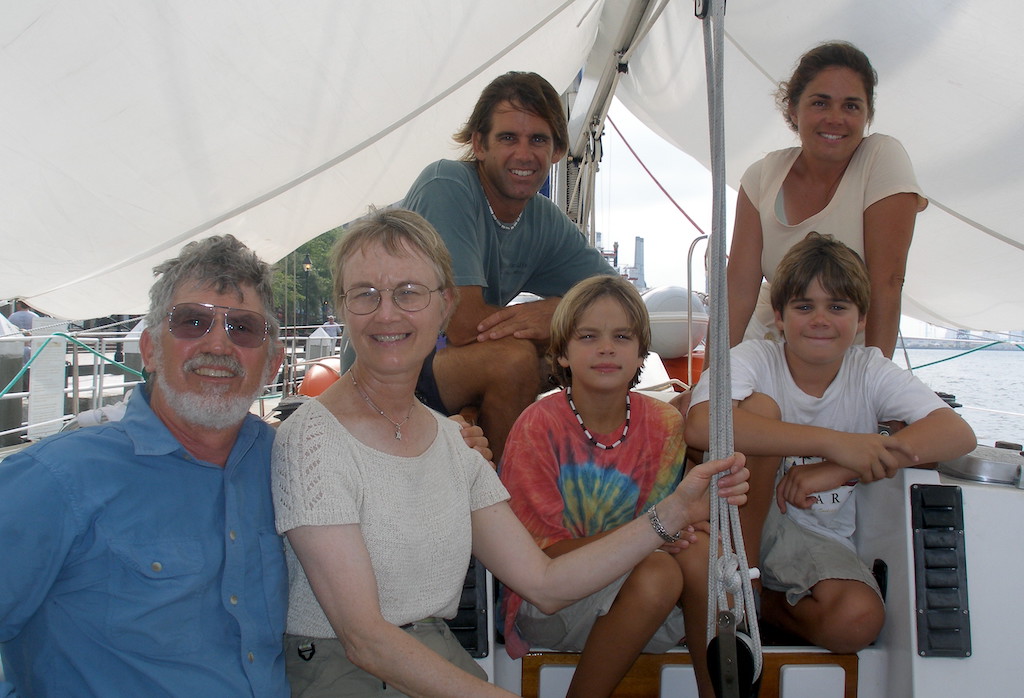Neither of us could handle another 5am start. It was nice to know the sun had that kind of endurance this time of year, but after the big push in the last few days to get around the Netherlands and Germany barrier islands (area known as the German Bight), Karen and I needed some R&R time. Cuxhaven, at the doorstep of the Elbe River, is at the crossroads of history. Just a few steps away from our marina stood the ornate arrival hall for the Hamburg America Line which, until it ceased operations in 1969, was the major departure point for German and other European emigrants to the U.S. During World War I, the German Navy operated airships out of a nearby hangar. Today, like many coastal cities, a majority of the economy has pivoted to tourism. However, just south of the historic cruise ship terminal is a state of the art offshore wind farm assembly plant run by Siemens Gamesa. These wind turbine components are so massive, much more so than the land-based wind farms, that manufacturers strategically locate their plants at ports like Cuxhaven where they can immediately load the components onto custom built ships for transport to the offshore sites. It also frees them from any over-the-road size constraints. We got a chance to see the multi-story high nacelles (the central hub of the turbine where the gears and generator are located) being loaded onto a ship at Cuxhaven. Hats off to the men and women in this industry, doing their own pivot like other neighboring European countries, as they shift focus from oil and gas production to clean energy production.





